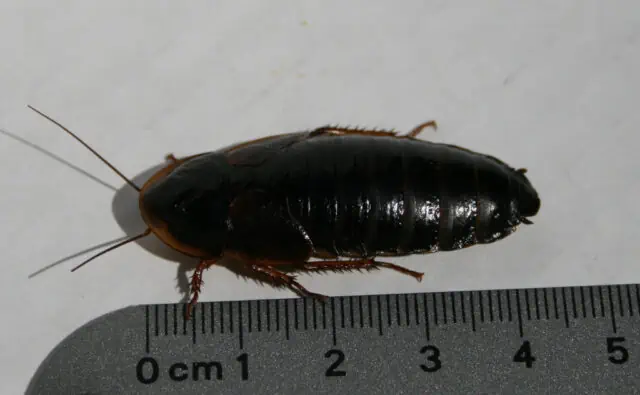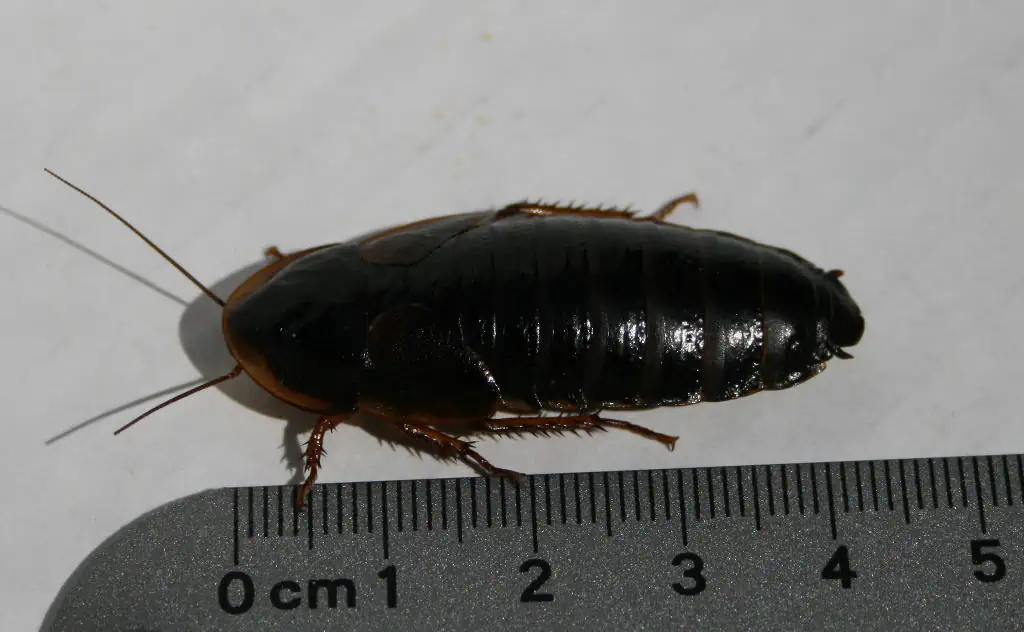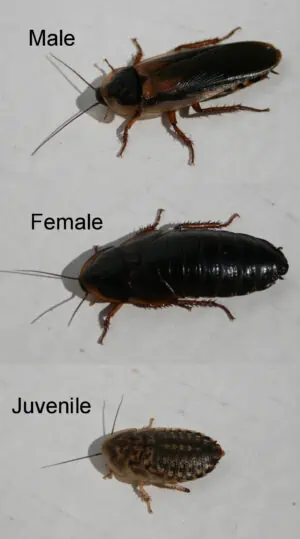Absolutely, leopard geckos can eat dubia roaches! This nutritious insect has become a popular choice among reptile enthusiasts for its numerous benefits. Leopard geckos, like many reptiles, have specific dietary needs. One question that often arises among gecko owners is the suitability of dubia roaches as a food source.
In this comprehensive guide, we’ll delve deep into the details of this potential food option, exploring everything from the basic characteristics of dubia roaches to their nutritional benefits for our scaly friends.
Can Leopard Geckos Eat Dubia Roaches?
Leopard geckos, with their unique dietary requirements, often leave their owners pondering about the best food choices. Among the myriad of options, dubia roaches have emerged as a topic of interest. Many gecko enthusiasts wonder about the appropriateness of these roaches in their pet’s diet.
What are Dubia Roaches?
Dubia roaches, scientifically known as Blaptica dubia, are a species of roach that stand out from the typical roaches you might encounter in your home. Unlike their common household counterparts, these roaches are tropical insects, originating from Central and South America.
Physically, they are characterized by their dark brown, almost black coloration, with a slightly flattened body and a size that can range from 1/8 inch as nymphs to up to 2 inches as adults.
Their habitat in the wild is primarily the warm, humid environments of the tropical rainforests. This makes them quite different from many other roach species, which might be more adapted to urban environments or drier climates.
Due to their tropical nature, dubia roaches thrive in conditions that mimic this warmth and humidity, which is why they’re often found in well-maintained terrariums or insect breeding setups.
Dubia Roaches as a Staple Food for Leopard Geckos

Over the years, dubia roaches have steadily climbed the ranks to become a staple food in the diet of leopard geckos. But what’s behind this growing acceptance?
Firstly, leopard geckos, being insectivorous, naturally gravitate towards a diet rich in insects. Dubia roaches, with their meaty bodies, offer a satisfying meal that’s packed with essential nutrients. Their soft exoskeleton makes them easier to digest, especially for younger geckos who might struggle with harder-shelled insects.
Moreover, dubia roaches are relatively easy to breed and maintain, making them a sustainable choice for gecko owners. They don’t require as much space as some other insect feeders, and their inability to fly or climb smooth surfaces means they’re less likely to escape and become a nuisance.
Another advantage is their behavior. Unlike crickets, which can be noisy and might even bite, dubia roaches are quiet and non-aggressive. This makes the feeding process less stressful for both the gecko and the owner.
Nutritional Benefits of Dubia Roaches for Leopard Geckos
When it comes to the health and well-being of leopard geckos, nutrition plays a pivotal role. Dubia roaches, in this context, offer a powerhouse of essential nutrients that can greatly benefit these reptiles.
Protein: Dubia roaches are rich in protein, a crucial component for the growth and muscle development of leopard geckos. Protein aids in tissue repair and provides the necessary energy for daily activities. Compared to other feeder insects, dubia roaches often have a higher protein content, making them an excellent choice for ensuring your gecko’s strength and vitality.
Fat: While excessive fat can be detrimental, a balanced amount is essential for energy storage and insulation. Dubia roaches have a moderate fat content, which can be particularly beneficial for breeding females or underweight geckos that need a little extra energy boost.
Vitamins and Minerals: Dubia roaches are a good source of essential vitamins and minerals. They contain Vitamin A, which is vital for vision, growth, and immune function. Additionally, they offer a decent amount of calcium, a mineral crucial for bone health, especially in growing geckos.
Hydration: Unlike some dry feeders, dubia roaches have a high moisture content. This can aid in keeping your gecko hydrated, especially if they’re not drinking water regularly.
Fiber: The exoskeleton of dubia roaches provides a source of fiber, which can aid in digestion and promote gut health.
How Many Dubia Roaches to Feed a Leopard Gecko?
Determining the right quantity and size of insects for your leopard gecko is crucial for their health and well-being. Overfeeding cockroaches can lead to obesity and other health issues, while underfeeding can result in malnutrition. Here’s a guideline based on the age and size of your leopard gecko:
Hatchlings (0-4 months)
Quantity: 4-8 small roaches daily.
Opt for nymphs or smaller-sized roaches, as these are easier for hatchlings to digest and won’t pose a choking hazard.
Juveniles (4-10 months)
Quantity: 5-10 medium roaches every other day.
As your gecko grows, you can gradually introduce them to medium-sized roaches. Ensure the roach isn’t larger than the space between the gecko’s eyes.
Adults (10+ months)
Quantity: 5-7 large roaches 2-3 times a week.
Adult geckos can handle larger roaches, but again, it’s a good rule of thumb to avoid feeding them anything larger than the space between their eyes.
Breeding Females
Quantity: 7-10 large roaches 3-4 times a week.
Breeding females require more energy, so they might eat a bit more than non-breeding adults. Ensure the roaches are appropriately sized.
Additional Tips
- Always observe your gecko’s behavior. If they’re leaving roaches uneaten, you might be offering too many. Adjust the quantity accordingly.
- Remember to gut-load your dubia roaches before feeding. This ensures they’re packed with nutrients beneficial for your gecko.
- It’s essential to maintain variety in your gecko’s diet. While dubia roaches are nutritious, incorporating other feeder insects will ensure a balanced diet.
Potential Health Issues with Eating Too Many Dubia Roaches
While dubia roaches offer numerous nutritional benefits for leopard geckos, like any food source, moderation is key. Over-reliance or overfeeding can lead to potential health concerns. Here are some risks associated with feeding too many dubia roaches to your leopard gecko:
Obesity: One of the most apparent risks of overfeeding any food, including dubia roaches, is obesity. A consistently overfed gecko can gain excessive weight, leading to a host of health issues, including joint problems, decreased mobility, and even a shortened lifespan.
Nutritional Imbalance: Solely relying on dubia roaches can lead to a dietary imbalance. While they are nutritious, they don’t provide all the nutrients a leopard gecko needs. For instance, a diet lacking in variety might miss out on certain essential fatty acids or other micronutrients.
Impaction: Feeding roaches that are too large or in excessive quantities can lead to impaction, a condition where the gecko’s digestive tract gets blocked. This can be life-threatening and requires immediate veterinary attention.
Reduced Appetite for Other Foods: Overfeeding dubia roaches might make your gecko less inclined to eat other essential foods. This selective eating can lead to deficiencies in nutrients that dubia roaches might not provide in ample amounts.
Dependency: A gecko fed only on dubia roaches might become dependent on them, refusing other food types. This can be problematic if there’s a shortage of roaches or if you need to switch to another food source for any reason.
Preventive Measures:
- Always maintain a varied diet for your gecko. Incorporate other feeder insects and ensure that dubia roaches are part of a balanced feeding regimen.
- Monitor your gecko’s weight and adjust feeding quantities if you notice excessive weight gain.
- Ensure the roaches are appropriately sized for your gecko to prevent impaction.
- Regularly check for signs of health issues, such as lethargy, reduced appetite, or difficulty moving. If in doubt, consult a veterinarian.
Other Foods that Leopard Geckos Can Eat
Leopard geckos are known for their diverse palate, and while dubia roaches are a nutritious choice, it’s essential to provide them with a variety of foods to ensure a balanced diet.
One popular alternative is crickets, which are readily available and packed with protein. They’re active, which can stimulate the gecko’s hunting instincts, making feeding time both nutritious and engaging.
Mealworms are another favorite among gecko enthusiasts. These worm-like larvae are rich in fat, making them an excellent choice for geckos that need a bit of a weight boost. However, their harder exoskeleton can sometimes be challenging for younger geckos to digest.
Waxworms, with their soft bodies and high-fat content, are often considered a treat for leopard geckos. While they shouldn’t make up the bulk of the diet due to their high fat, they can be a delightful occasional snack.
Silkworms are also gaining popularity in the gecko community. They’re soft, making them easy to digest, and are rich in essential amino acids and enzymes that can benefit the gecko’s overall health.
Ants can also be a potential food for Leopard Geckos, but it depends on the quantity and type. They have both pros and cons. Cons seem to be winning, so ants aren’t the best for this purpose.
Lastly, there’s the phoenix worm, which is known for its high calcium content. This makes them particularly beneficial for breeding females or geckos that might be at risk of calcium deficiency.
Purchasing and Feeding Dubia Roaches to Your Leopard Gecko
Embracing the advantages of dubia roaches is just the beginning for leopard gecko owners. The subsequent crucial phase involves sourcing these nutritious insects and ensuring they’re fed to your gecko in the most beneficial manner.
Where to Purchase Feeder Insects
Navigating the world of feeder insects can be a bit daunting, especially for new leopard gecko owners. When it comes to purchasing dubia roaches, it’s essential to find reputable sources that guarantee healthy, high-quality insects.
For those who prefer in-person shopping, local pet shops are often the first stop. Many well-established pet stores carry a range of feeder insects, including dubia roaches. Shopping locally allows you to inspect the roaches firsthand, ensuring they’re active and appear healthy. Additionally, store staff can be a valuable resource, offering care tips and answering any questions you might have.
However, with the rise of e-commerce, many gecko owners are turning to online stores for their feeder insect needs. Websites dedicated to reptile care often have a vast selection of dubia roaches, available in various sizes and quantities. When shopping online, it’s essential to read reviews and perhaps even join reptile forums or groups to get recommendations from experienced owners. Websites with a solid return policy and good customer feedback are usually a safe bet.
Another avenue to explore is reptile expos or conventions. These events often have vendors specializing in feeder insects, and you can get bulk deals or discounts. Plus, it’s an excellent opportunity to connect with fellow reptile enthusiasts and gather insights on the best gecko food sources.
Properly Preparing and Feeding the Dubia Roaches to Your Leopard Gecko
Once you’ve sourced quality dubia roaches, the next step is ensuring they’re prepared correctly to offer maximum nutritional value to your leopard gecko. Proper preparation not only enhances the roaches’ nutritional profile but also ensures safe consumption for your pet.
Gut-loading is the process of feeding the dubia roaches a nutritious diet before offering them to your gecko. This ensures that the roaches are filled with essential nutrients that will, in turn, be passed on to your pet. For about 24 to 48 hours before feeding them to your gecko, provide the roaches with a mix of high-quality commercial insect food and fresh fruits or vegetables. This enhances their vitamin and mineral content, making them a more nutritious meal.
In addition to gut-loading, it’s also crucial to dust the roaches with a calcium or vitamin supplement. This is especially important for leopard geckos, which require a balanced calcium-to-phosphorus ratio for bone health. To dust the roaches, place them in a plastic bag or container with the supplement powder and gently shake until they’re lightly coated.
When it’s feeding time, use tongs or a similar tool to offer the roaches to your gecko. This minimizes the risk of your gecko accidentally biting your fingers. It’s also a good practice to feed your gecko in a separate feeding container, preventing any uneaten roaches from hiding in the gecko’s primary habitat.
Monitoring your gecko during feeding can provide insights into its dietary preferences and ensure it’s consuming the roaches without any issues. Over time, you’ll get a better sense of how many roaches your gecko prefers and any specific feeding techniques that work best for your unique pet.
How Often Should You Feed Your Leopard Gecko Dubia Roaches?
The frequency with which you feed your leopard gecko dubia roaches plays a pivotal role in its overall health and growth. However, this frequency isn’t one-size-fits-all; it varies based on the age and size of your gecko.
For hatchlings and young geckos, their rapid growth means they have a higher metabolic rate and, consequently, a more frequent feeding schedule. Typically, geckos in the age range of 0 to 4 months should be fed daily. Their voracious appetite at this stage helps support their rapid growth and development.
As the gecko transitions into its juvenile phase, from around 4 to 10 months, the feeding frequency can be reduced slightly. At this stage, feeding them every other day is generally recommended. Their growth rate slows down a bit, but they still require consistent nutrition to support their development.
Once the leopard gecko reaches adulthood, which is typically around the 10-month mark and beyond, their dietary needs stabilize. Adult geckos can be fed dubia roaches 2 to 3 times a week. This frequency ensures they receive the necessary nutrients without the risk of overfeeding, which could lead to obesity and other health issues.
It’s also essential to consider the gecko’s size and activity level. A more active gecko might require more food, while a less active or smaller one might need less. Always monitor your gecko’s weight and adjust the feeding frequency and quantity as needed.






